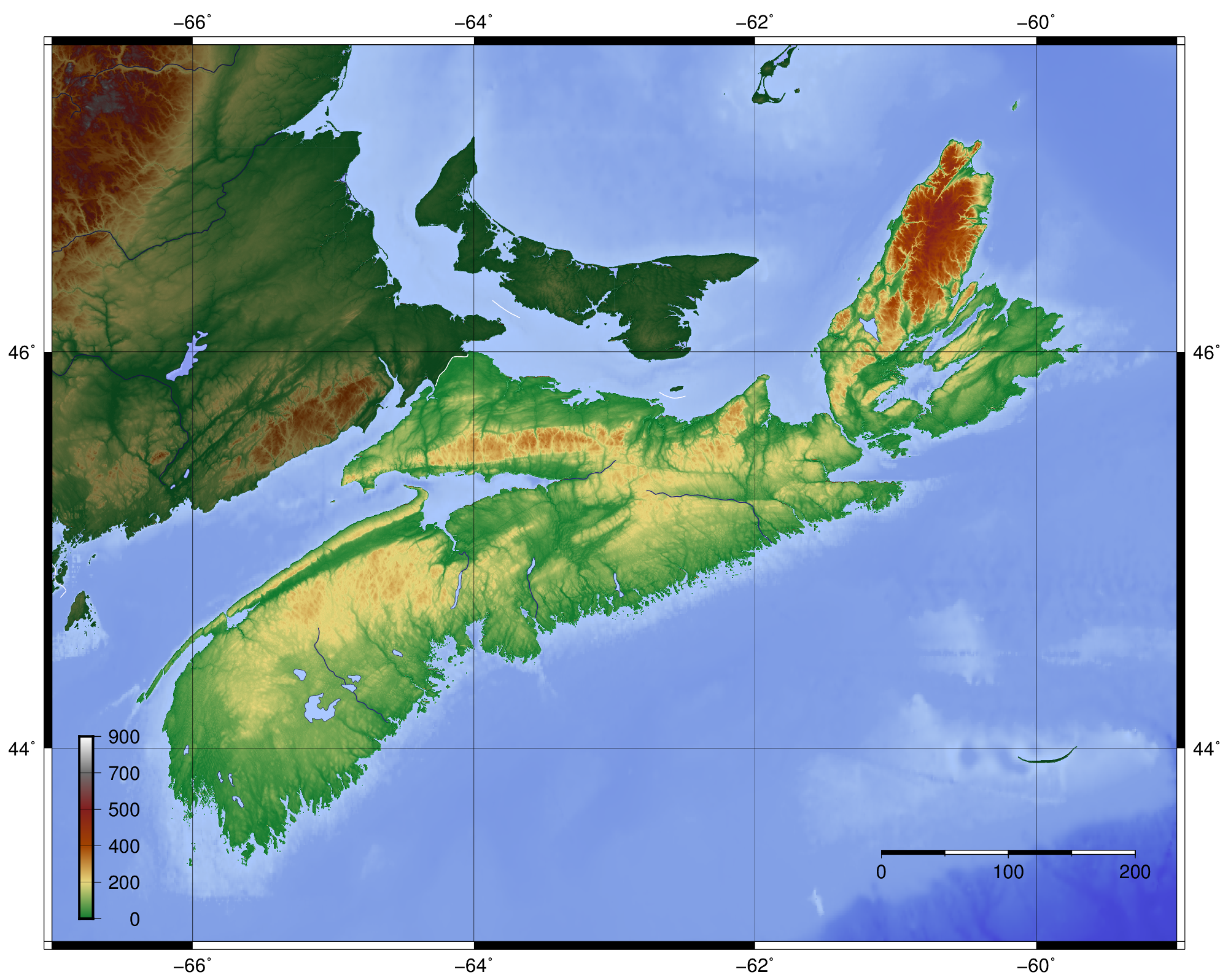|
William Davison Hill
William Davison Hill (February 28, 1860 – November 6, 1944) was a farmer and political figure in Nova Scotia, Canada. He represented Colchester County Colchester County is a county in the Canadian province of Nova Scotia. With a population of 51,476 the county is the fourth largest in Nova Scotia. Colchester County is located in north central Nova Scotia. The majority of the county is gover ... in the Nova Scotia House of Assembly from 1906 to 1911 as a Liberal member. He was born in at Five Islands, Colchester County, Nova Scotia, the son of Daniel Hill and Esther Davison. In 1876, Hill married Nancy Fulton. Some time afterwards, he moved from the family farm and bought his own farm at Onslow. Hill raised cattle and horses and was also involved in the sale of lumber. In 1911, he was named to the province's Legislative Council. References * 1860 births 1944 deaths Nova Scotia Liberal Party MLAs Nova Scotia Liberal Party MLCs {{Liberal-NovaScotia-M ... [...More Info...] [...Related Items...] OR: [Wikipedia] [Google] [Baidu] |
Nova Scotia
Nova Scotia ( ; ; ) is one of the thirteen provinces and territories of Canada. It is one of the three Maritime provinces and one of the four Atlantic provinces. Nova Scotia is Latin for "New Scotland". Most of the population are native English-speakers, and the province's population is 969,383 according to the 2021 Census. It is the most populous of Canada's Atlantic provinces. It is the country's second-most densely populated province and second-smallest province by area, both after Prince Edward Island. Its area of includes Cape Breton Island and 3,800 other coastal islands. The Nova Scotia peninsula is connected to the rest of North America by the Isthmus of Chignecto, on which the province's land border with New Brunswick is located. The province borders the Bay of Fundy and Gulf of Maine to the west and the Atlantic Ocean to the south and east, and is separated from Prince Edward Island and the island of Newfoundland by the Northumberland and Cabot straits, ... [...More Info...] [...Related Items...] OR: [Wikipedia] [Google] [Baidu] |
Colchester County
Colchester County is a county in the Canadian province of Nova Scotia. With a population of 51,476 the county is the fourth largest in Nova Scotia. Colchester County is located in north central Nova Scotia. The majority of the county is governed by the Municipality of the County of Colchester, the county also is home to two independent incorporated towns, Stewiacke and Truro, two village commissions in Bible Hill and Tatamagouche, and the Millbrook 27 First Nations reserve. History The glaciers began their retreat from in the Maritimes approximately 13,500 years ago. The earliest evidence of Palaeo-Indian settlement in the region follows rapidly after deglaciation. The record of continuous habitation through the paleo and archaic period over ten thousand years culminated in the development of the culture, traditions, and language now known as the Mi'kmaq. For several thousand years the territory of the province has been a part of the territory of the Mi'kmaq nation of M ... [...More Info...] [...Related Items...] OR: [Wikipedia] [Google] [Baidu] |
Nova Scotia House Of Assembly
The Nova Scotia House of Assembly (french: Assemblée législative de la Nouvelle-Écosse; gd, Taigh Seanaidh Alba Nuadh), or Legislative Assembly, is the deliberative assembly of the General Assembly of Nova Scotia of the province of Nova Scotia, Canada. The assembly is the oldest in Canada, having first sat in 1758, and in 1848 was the site of the first responsible government in the British Empire. Bills passed by the House of Assembly are given royal assent by the Lieutenant Governor of Nova Scotia in the name of the Monarchy in Nova Scotia, King. Originally (in 1758), the Legislature consisted of the Crown represented by a governor (later a lieutenant governor), the appointed Nova Scotia Council holding both executive and legislative duties and an elected House of Assembly (lower chamber). In 1838, the council was replaced by an Executive Council of Nova Scotia, executive council with the executive function and a Legislative Council of Nova Scotia, legislative council with the ... [...More Info...] [...Related Items...] OR: [Wikipedia] [Google] [Baidu] |
Liberal Party Of Nova Scotia
The Nova Scotia Liberal Party is a centrist provincial political party in Nova Scotia, Canada and the provincial section of the Liberal Party of Canada. The party currently forms the Official Opposition in Nova Scotia, under the leadership of Zach Churchill. The party was in power most recently from the 2013 election until the 2021 election. Origins The party is descended from the pre-Confederation Reformers in Nova Scotia who coalesced around Joseph Howe demanding the institution of responsible government. The Liberals (Reformers) formed several governments in the colony between 1848 and 1867. The party split during the debate on Confederation, with Howe and most other Liberals forming an Anti-Confederation Party, while supporters of confederation joined Tory Charles Tupper's Confederation Party. Howe, himself, initially opposed Confederation, but accepted it as a reality after initial attempts to scuttle it failed. In 1868, Howe joined the pro-Confederation forces, serving fo ... [...More Info...] [...Related Items...] OR: [Wikipedia] [Google] [Baidu] |
Colchester County, Nova Scotia
Colchester County is a county in the Canadian province of Nova Scotia. With a population of 51,476 the county is the fourth largest in Nova Scotia. Colchester County is located in north central Nova Scotia. The majority of the county is governed by the Municipality of the County of Colchester, the county also is home to two independent incorporated towns, Stewiacke and Truro, two village commissions in Bible Hill and Tatamagouche, and the Millbrook 27 First Nations reserve. History The glaciers began their retreat from in the Maritimes approximately 13,500 years ago. The earliest evidence of Palaeo-Indian settlement in the region follows rapidly after deglaciation. The record of continuous habitation through the paleo and archaic period over ten thousand years culminated in the development of the culture, traditions, and language now known as the Mi'kmaq. For several thousand years the territory of the province has been a part of the territory of the Mi'kmaq nation of Mi ... [...More Info...] [...Related Items...] OR: [Wikipedia] [Google] [Baidu] |
Onslow, Nova Scotia
Onslow is a rural, unincorporated Canadian community in central Colchester County, Nova Scotia. The community is located along the north bank of the Salmon River, opposite the town of Truro and is largely a farming area. The area was first settled by Acadians and resettled after their expulsion as Onslow Township in 1761 by Irish emigrants under Colonel McNutt. The township is believed to have been named after Arthur Onslow. An important highway interchange is located in the community, where Highway 102 terminates at Highway 104. Onslow is home to Central Colchester Junior High School, operated by the Chignecto-Central Regional School Board. Onslow also contains a John Deere dealership and a volunteer fire department; the corner store has closed. In the fall and spring, migrating Canada geese are attracted to the farmlands. Onslow is geographically situated in an area with high winds, making it an excellent location for wind turbines. Some farmers in the area have chosen to ere ... [...More Info...] [...Related Items...] OR: [Wikipedia] [Google] [Baidu] |
Legislative Council Of Nova Scotia
The Legislative Council of Nova Scotia was the upper house of the legislature of the Canadian province of Nova Scotia. It existed from 1838 to May 31, 1928. From the establishment of responsible government in 1848, members were appointed by the Lieutenant Governor of Nova Scotia on the advice of the Premier. Before Confederation The Legislative Council had its origins in the older unified Nova Scotia Council, created in 1719 and appointed in 1720, which exercised a combination of executive and judicial functions. Its functions were more formally specified in instructions issued by the Board of Trade in 1729. The Council acted as the Governor's cabinet and as the province's General Court until the Supreme Court of Nova Scotia was established in 1754 (but its judicial function was not totally eliminated). It assumed a legislative function in 1758, when the 1st General Assembly of Nova Scotia was called, by acting as its upper house. The constitution of the Council and its form of ... [...More Info...] [...Related Items...] OR: [Wikipedia] [Google] [Baidu] |
1860 Births
Year 186 ( CLXXXVI) was a common year starting on Saturday (link will display the full calendar) of the Julian calendar. At the time, it was known as the Year of the Consulship of Aurelius and Glabrio (or, less frequently, year 939 ''Ab urbe condita''). The denomination 186 for this year has been used since the early medieval period, when the Anno Domini calendar era became the prevalent method in Europe for naming years. Events By place Roman Empire * Peasants in Gaul stage an anti-tax uprising under Maternus. * Roman governor Pertinax escapes an assassination attempt, by British usurpers. New Zealand * The Hatepe volcanic eruption extends Lake Taupō and makes skies red across the world. However, recent radiocarbon dating by R. Sparks has put the date at 233 AD ± 13 (95% confidence). Births * Ma Liang, Chinese official of the Shu Han state (d. 222) Deaths * April 21 – Apollonius the Apologist, Christian martyr * Bian Zhang, Chinese official and ... [...More Info...] [...Related Items...] OR: [Wikipedia] [Google] [Baidu] |
1944 Deaths
Events Below, the events of World War II have the "WWII" prefix. January * January 2 – WWII: ** Free France, Free French General Jean de Lattre de Tassigny is appointed to command First Army (France), French Army B, part of the Sixth United States Army Group in North Africa. ** Landing at Saidor: 13,000 US and Australian troops land on Papua New Guinea, in an attempt to cut off a Japanese retreat. * January 8 – WWII: Philippine Commonwealth troops enter the province of Ilocos Sur in northern Luzon and attack Japanese forces. * January 11 ** President of the United States Franklin D. Roosevelt proposes a Second Bill of Rights for social and economic security, in his State of the Union address. ** The Nazi German administration expands Kraków-Płaszów concentration camp into the larger standalone ''Konzentrationslager Plaszow bei Krakau'' in occupied Poland. * January 12 – WWII: Winston Churchill and Charles de Gaulle begin a 2-day conference in Marrakech ... [...More Info...] [...Related Items...] OR: [Wikipedia] [Google] [Baidu] |
Nova Scotia Liberal Party MLAs
A nova (plural novae or novas) is a transient astronomical event that causes the sudden appearance of a bright, apparently "new" star (hence the name "nova", which is Latin for "new") that slowly fades over weeks or months. Causes of the dramatic appearance of a nova vary, depending on the circumstances of the two progenitor stars. All observed novae involve white dwarfs in close binary systems. The main sub-classes of novae are classical novae, recurrent novae (RNe), and dwarf novae. They are all considered to be cataclysmic variable stars. Classical nova eruptions are the most common type. They are likely created in a close binary star system consisting of a white dwarf and either a main sequence, subgiant, or red giant star. When the orbital period falls in the range of several days to one day, the white dwarf is close enough to its companion star to start drawing accreted matter onto the surface of the white dwarf, which creates a dense but shallow atmosphere. This atmospher ... [...More Info...] [...Related Items...] OR: [Wikipedia] [Google] [Baidu] |



.jpg)

